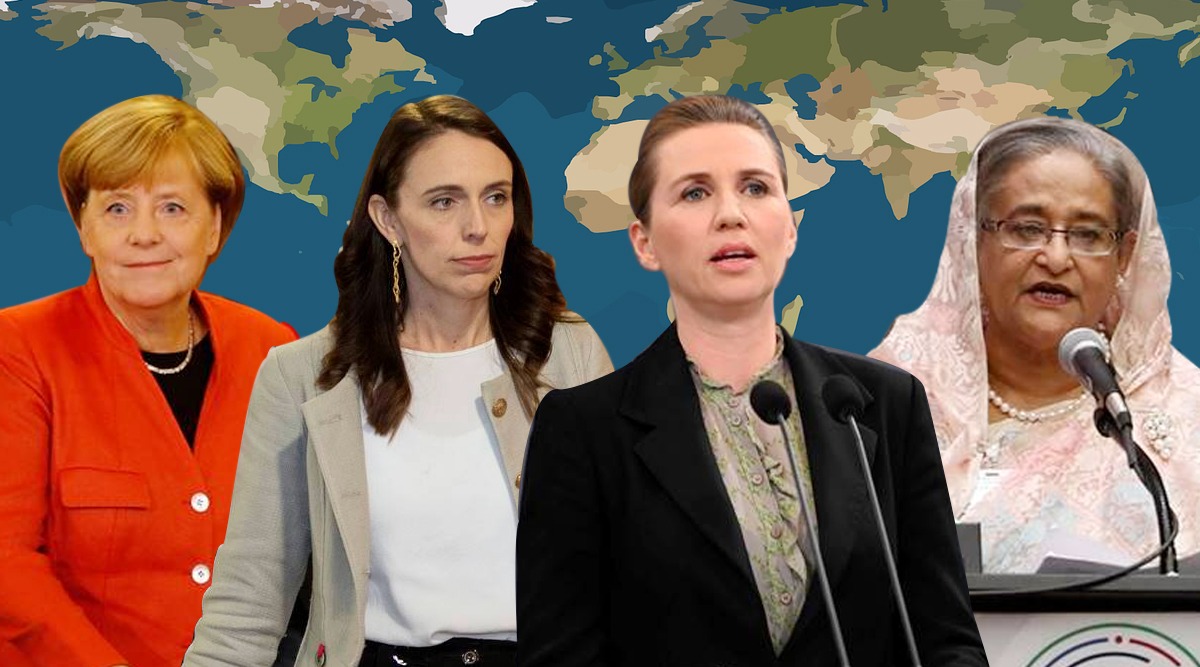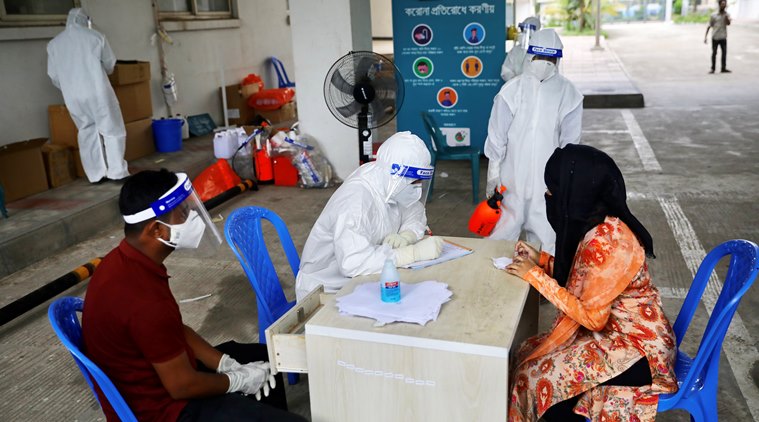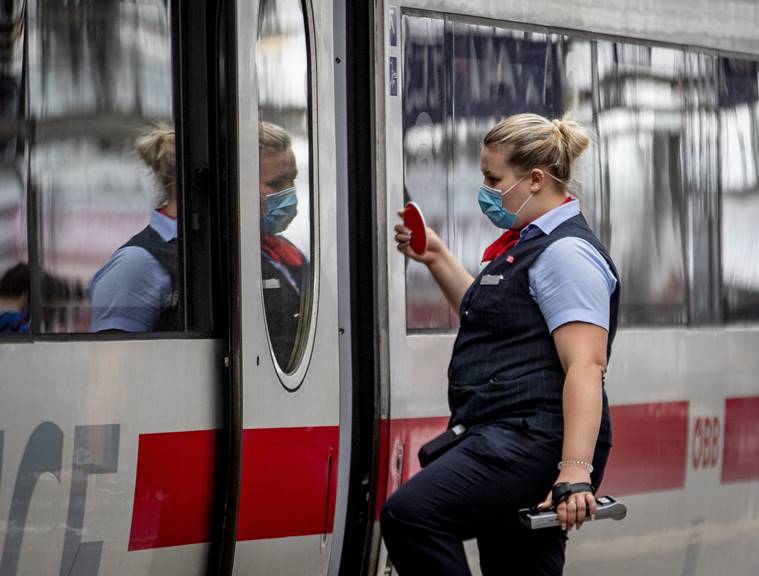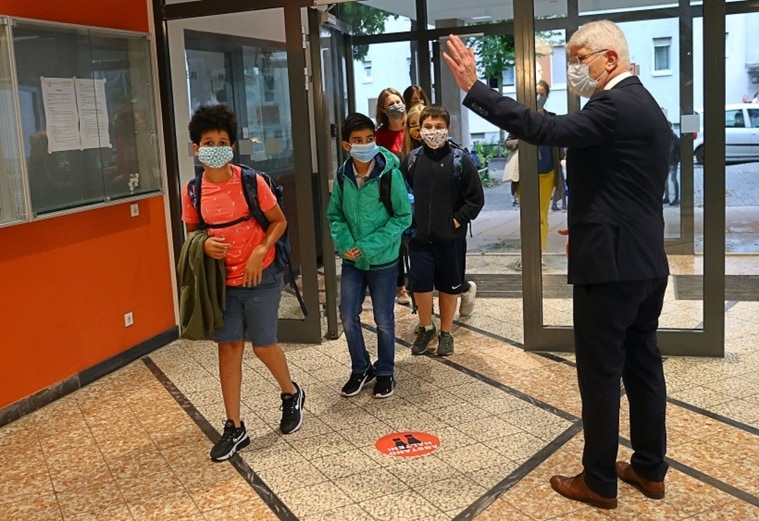 (From L to R) Germany' Angela Merkel, New Zealand' Jacinda Ardern, Denmark's Mette Frederiksen and Bangladesh's Sheikh Hasina
(From L to R) Germany' Angela Merkel, New Zealand' Jacinda Ardern, Denmark's Mette Frederiksen and Bangladesh's Sheikh HasinaCountries with women leaders at the helm seem to have handled the coronavirus pandemic significantly better than their male counterparts, shows a study published in the Centre for Economic Policy Research and the World Economic Forum. It analysed 194 countries hit by Covid-19. However, since only 19 countries had women leaders, the researchers used a “nearest neighbour” method based on socio-demographic and economic factors, pairing Germany, New Zealand and Bangladesh with male-led Britain, Ireland and Pakistan.
According to Johns Hopkins University’s Covid-19 tracker, as of August 20, Germany has more than 9,000 coronavirus deaths, while the UK has more than 41,000; New Zealand has 22 Covid-19 deaths, while Ireland has more than 1,700, and Bangladesh has reported 3,500 fatalities as compared to Pakistan’s more than 6,000.
The research paper reasoned that this may be due to “the proactive and coordinated policy responses” adopted by female leaders. The study, carried out by Supriya Garikipati, University of Liverpool, and Uma Kambhampati, University of Reading, revealed that agile policy measures in the initial three months of the pandemic in female-led countries saved nearly two times more lives than those run by male leaders despite having similar numbers of cases.

 Data source: Johns Hopkins University’s Covid-19 tracker
Data source: Johns Hopkins University’s Covid-19 tracker
Moreover, an important facet the study highlighted is the fact that women were less willing to take risks with lives and imposed a nationwide lockdown significantly earlier than male leaders. Concurrently, they were “more willing to take risks in the domain of the economy”.
“Our results clearly indicate that women leaders reacted more quickly and decisively in the face of potential fatalities,” said Supriya Garikipati.
“In almost all cases, they locked down earlier than male leaders in similar circumstances. While this may have longer-term economic implications, it has certainly helped these countries to save lives, as evidenced by the significantly lower number of deaths in these countries,” she said in the paper.
Here is how woman-led nations responded to the Covid-19 crisis:
👉 New Zealand – Jacinda Ardern
On June 9, a beaming New Zealand Prime Minister Jacinda Ardern announced the country had eliminated the disease, earning global praise for her steadfast response to the pandemic. However, more than 100 days later, a new wave of coronavirus infections have hit the country, with the government wasting no time in re-imposing a lockdown in Auckland and postponing general elections by four weeks.
As early as March 15, when the country had only 100 confirmed cases, the government closed its borders to foreign travellers and quarantined people coming home for 14 days. A week later, it imposed a stringent lockdown, with only grocery stores, pharmacies, hospitals and gas stations allowed to stay open.
Besides, the government was quick on its feet and communicated the rules to the public effectively, sending emergency text messages to residents before the lockdown. Moreover, the country ramped up its testing capacity to 8,000 tests per day, one of the highest testing rates per capita in the world at that time.
 A woman consults a doctor before swab testing at Mugda Medical College and Hospital in Dhaka (Reuters)
A woman consults a doctor before swab testing at Mugda Medical College and Hospital in Dhaka (Reuters)
👉 Bangladesh – Sheikh Hasina
Despite being one of the densely-populated countries, Bangladesh has a low coronavirus death rate so far. Bangladesh has a death rate of 1.3 per cent, one of the world’s lowest, against the global average of 3.54 per cent.
The foremost step that Prime Minister Sheikh Hasina took was to diffuse the panic among its citizens — she conducted national broadcasts with frontline workers almost every day and avoided using the word lockdown in any of its references.
By late January, the government evacuated Bangladeshi citizens from China and put them in quarantine. Unlike other nations, Bangladesh went for a tiered system of lockdown as cases started being reported. First, the educational institutions were shut down, then non-essential businesses and services were closed, while others were asked to expand their online services.
The government also roped in civil society members along with police and military for enforcing the lockdown. A ‘6 pm to 6 am’ restriction was imposed, especially in dense urban areas.
 A conductor enters a train in the central train station in Frankfurt, Germany (AP)
A conductor enters a train in the central train station in Frankfurt, Germany (AP)
👉 Germany – Angela Merkel
Compared to neighbours like France and Italy, Germany’s Covid-19 response has been widely regarded as relatively successful owing to widespread testing, a well-equipped healthcare system and good adherence to social distancing.
A scientist herself, Merkel provided weekly data-driven updates to the public as a way to instill confidence in lockdowns and also deployed a handful of prominent scientists to communicate with the citizens to weed out rumours and misinformation.
As early as March, hospitals in Germany started freeing up intensive care beds and pushed back elective surgeries. Thus hospitals in Germany were not overwhelmed by Covid-19 patients and people from neighbouring countries like Italy and Spain were also being treated. The government also put in place a live-dashboard of all available ICU beds in hospitals countrywide.
 Director Juergen Scheuermann welcomes students as schools re-open after lockdown at the Karl-Rehbein high school in Hanau, Germany (Reuters)
Director Juergen Scheuermann welcomes students as schools re-open after lockdown at the Karl-Rehbein high school in Hanau, Germany (Reuters)
👉 Denmark – Mette Frederiksen
Denmark, which went into a lockdown on March 12 — 12 days before measures were introduced in the UK, was one of the first European countries to partially re-open its society way back in May. Gatherings were limited to 10 people, the workforce told to stay home and schools, restaurants and borders were shut. A ban on festivals and large events has been placed until September.
Researcher Janne Rothmar Herrmann also pointed out that Denmark made major changes in the Epidemic Act, transferring power from the regional Epidemic Commissions to the Health Minister. The Minister was authorised to access a person’s home with police assistance without prior court order. “He was also entitled to use police assistance to isolate, examine or treat a person who is infected or believed to be infected,” Herrmann said.
👉 Taiwan – Tsai Ing-Wen
Despite its proximity to China, where the outbreak first appeared, Taiwan has turned out to be a model in Covid-19 fight. As of August 20, Taiwan has only about 486 infections and seven deaths for a population of 23 million. By comparison, New York state — with slightly fewer people — had more than 5.5 million cases and more than 32,500 deaths.
Taiwan began implementing onboard quarantine of direct flights from Wuhan as early as December 31 itself. In January, Taiwan established a response team for the disease and activated the Central Epidemic Command Center. To cater to the demand for masks, the government introduced maps with real-time updates about mask inventory nearby.
What significantly aided Taiwan’s response was digitisation of healthcare records of its citizens. Health officials harnessed this data to send alerts to doctors about patients at higher risk of Covid-19 based on their travel history.